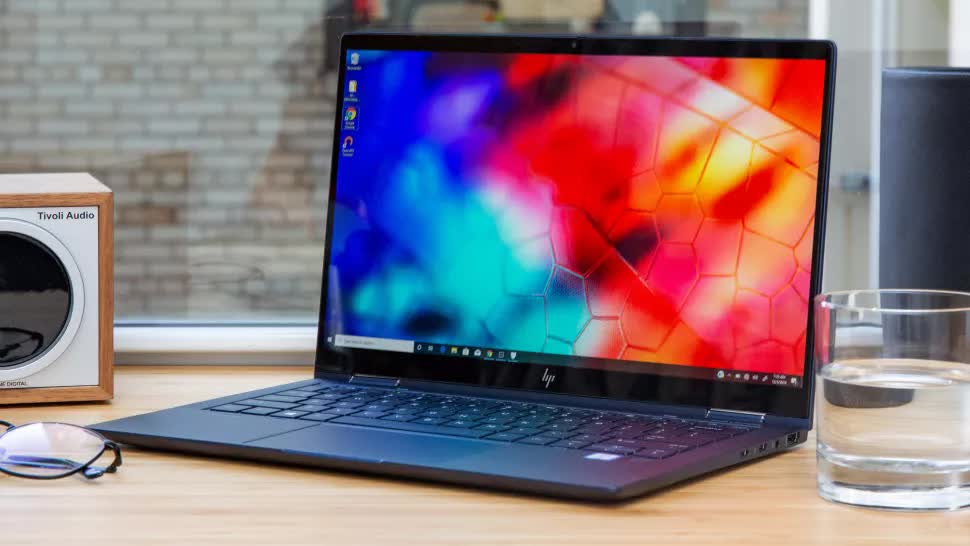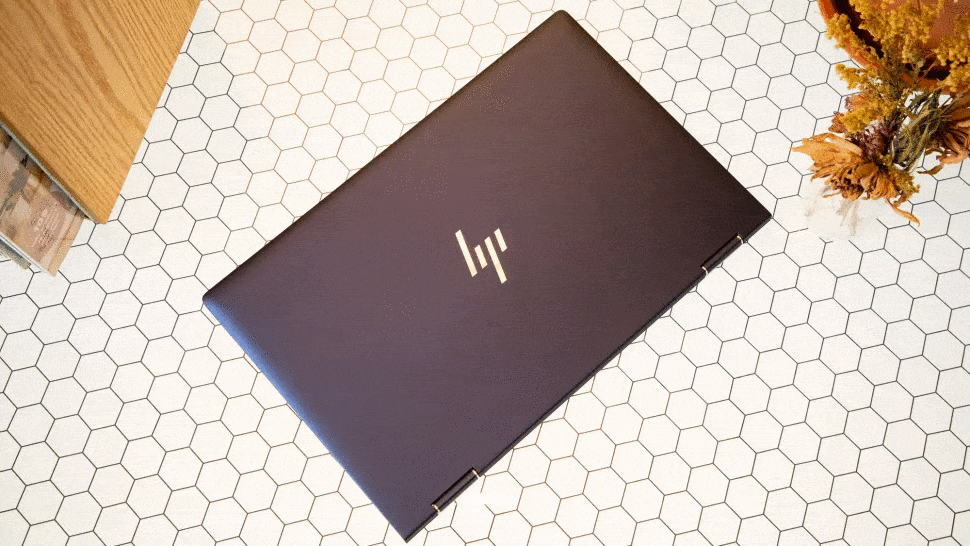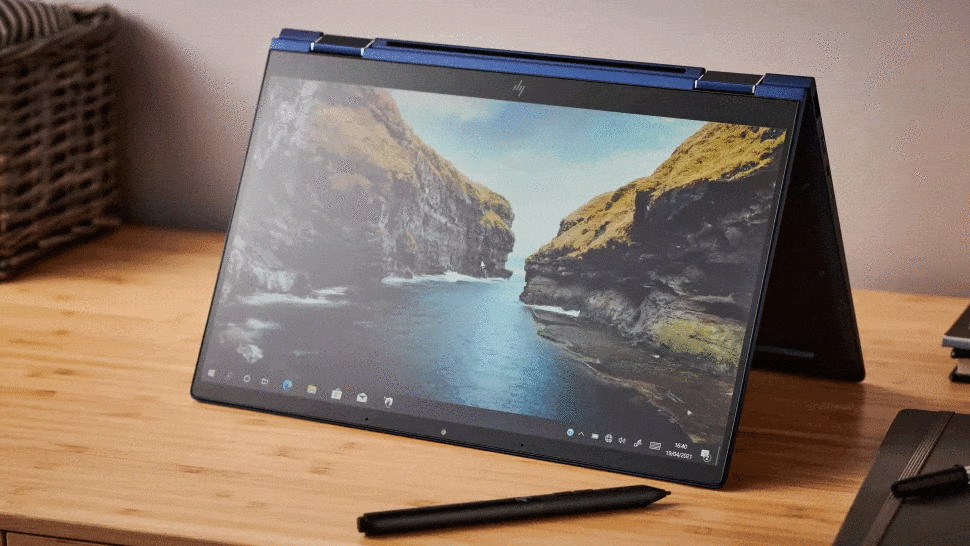
As with the HP Elite Dragonfly review, HP continues to deliver in its business laptop sector. It feels like the copper and black Spectre laptops were not enough, as the new HP Elite Dragonfly (starting at $1,664, and tested at $2,298) shocks the system with its elegant blue-magnesium chassis that’s much lighter than it looks. But the Dragonfly’s beauty is far from just appearance, thanks to a beautiful display, thin bezels, and surprisingly long battery life for a machine of this size.
If only the laptop weren’t high in price, I’d be recommending this to everyone I know as the PC to buy. The HP Elite Dragonfly is such a good 2-in-1 laptop, though, that it’s more than worth its investment; it’s going to make other laptop makers take notice of HP as a leader in premium laptops — and, yes, even MacBook fans will take notice. That’s why it’s one of the best Windows laptops you can buy, and one of the top best HP laptops on the market.
KEY SPECIFICATIONS
CPU: 8th-Gen Intel Core i3 / i5 / i7
RAM: 8GB / 16GB / 32GB
STORAGE: 128GB / 256GB / 512GB / 1TB / 2TB SSD
DISPLAY: 13.3-inch touch-screen display, 1920 x 1200 or 3840 x 2160
DIMENSIONS: 12 x 7.8 x 0.6 in. @ 1.13kg
BATTERY LIFE: Up to 12 hours
PORTS: USB-C Thunderbolt 3 (x2), USB 3.1, HDMI 1.4, headphone jack
Design

The HP Elite Dragonfly, named after the shade of blue that HP painted the machine. This is a 2-in-1 laptop so beautiful that it could influence the next generation of notebooks after it. From its striking hue to the slight silver accent touches and a very attractive texture, this is a laptop whose appearance I can’t crack a joke about.
At a shocking 1.13kg and at 0.6 inches in thickness, the Elite Dragonfly makes the Dell XPS 13 2-in-1 (1.31kg, 0.5 inches), Lenovo ThinkPad X1 Yoga ( 1.36kg, 0.6 inches), and Apple MacBook Air (1.27kg, 0.6 inches) seem hefty by comparison.
Another amazing thing about this laptop’s lightweight design, though, is that the machine doesn’t feel flimsy for it. We’ve tested other magnesium-shell machines before, but unlike them, the Dragonfly doesn’t buckle or bend when you grip or apply pressure, thanks to some internal reinforcements. Also, HP made provision for an oleophobic coating to the Dragonfly’s machined metal shell, making it easy to cleanse any smudges.
Display and graphics

Based on our colorimeter test, the Dragonfly produces 117% of the sRGB spectrum, which is almost the 122% premium laptop average and competes closely with the 113% score from the XPS 13 2-in-1. That score beats the 106% rating from the ThinkPad X1 Yoga and the 100% from the MacBook Air by a margin.
The Dragonfly’s screen gets pretty bright, as well, emitting up to 373 nits. That is more than the 362-nit category average and the 342 nits from the MacBook Air. The ThinkPad X1 Yoga gets even brighter and ranks higher, hitting a maximum of 402 nits, as did the 516-nit Dell XPS 13. You also get an excellent range of viewing angles, as colors stay strong at up to 60 degrees to the left and right.
As I tapped, pinched, pulled and swiped on the Dragonfly’s touch screen, I saw excellent responsiveness with fast reaction times which is a plus for such a luxury laptop. Scrolling through news articles on the internet was also very smooth.
HP Elite Dragonfly review: Performance
The HP Dragonfly we tested comes with an 8th Gen. Intel Core i5-8665U processor and 16GB of RAM, providing speedy performance. I experienced a zero slowdown when I split my screen with the 4K remaster of Wham!’s “Last Christmas” video on YouTube and a dozen Chrome tabs.

The Dragonfly’s 14,071 result on the Geekbench 4.3 general-performance benchmark is a little bit below the 16,357 premium laptop average and the 15,113 from the ThinkPad X1 Yoga (Intel Core i5-8265U, 8GB of RAM). However, the Dragonfly’s score outshines the 7,880 from the MacBook Air (Intel Core i5-8210Y with 8GB of RAM) out of the way.
The 512GB M.2 PCIe NVMe SSD (with 32GB Intel Optane 3D XPoint SSD) in the Dragonfly copied 4.7GB of files in 12 seconds, for a speed of 424.1 MBps. That ties the rate from the 256GB M.2 PCIe NVMe Opal 2 SSD in the ThinkPad X1 Yoga but falls behind the 513.65 category average.
The Intel UHD 620 GPU in the Dragonfly will not be suitable for ultimate gaming, however, this laptop sneaks a modest amount of prowess out of its integrated graphics. The Dragonfly played the Dirt 3 racing game at 31fps (frames per second). That might fall below the 59-fps premium laptop average, but it’s the same rate we saw in the ThinkPad X1 Yoga (which also sports the Intel UHD 620).
Battery life and charging
The Dragonfly’s small, lightweight chassis packs way more endurance than you might normally think. Our battery test (web surfing at 150 nits) drained the battery of a full charge in 12 hours and 25 minutes, clobbering the 8:43 premium laptop average, the 8:51 time from the MacBook Air, the 10:18 from the ThinkPad X1 Yoga, and the 10:57 time from the XPS 13 2-in-1.
Although this time comes from a Dragonfly with a four-cell battery, you can downgrade from that version if you want to save $22 and shave 0.09kg off the weight. Personally, I’d keep the four-cell battery.
Price and availability
With an entry price of $1,664 (currently on sale at a $2,561 starting price), the Dragonfly is priced to be out of reach for most consumers, intended more for business and professionals on the go. The Lenovo ThinkPad X1 Yoga with similar specs costs a little bit lower (but still pricey) $1,327, while the Intel-based MacBook Air starts at a significantly less expensive $999 — and has the new Apple M1 processor to boot.
I’d recommend you bump up to the $1,811, midrange model, which features a Core i5-8365U CPU, 256GB SSD, 16GB of RAM, Intel vPro security, a 1920 x 1080-pixel and 1,000-nit panel, and HP’s Sure View privacy-screen technology.
What we think about this laptop
The HP Dragonfly’s crisp, beautiful display; lightweight design; and robust security features combine to give you a laptop that’s as nice to look at as it is to use. If only it didn’t cost so much that I winced when I saw our testing unit’s price. You could save $300 by opting for the Lenovo ThinkPad X1 Yoga, but you’d be dropping over 2 hours in battery life in exchange. That said, the HP Elite Dragonfly truly earns the Elite branding, as this laptop’s elegance and endurance add up to utter excellence.
| What we like | What we do not like |
| Great battery life | Quite expensive |
| Bright and colorful screen | |
| Good keyboard | |
| Stunning design |
If you found our HP Elite Dragonfly review helpful, drop a comment below and to forget to share with friends and colleagues at work.
